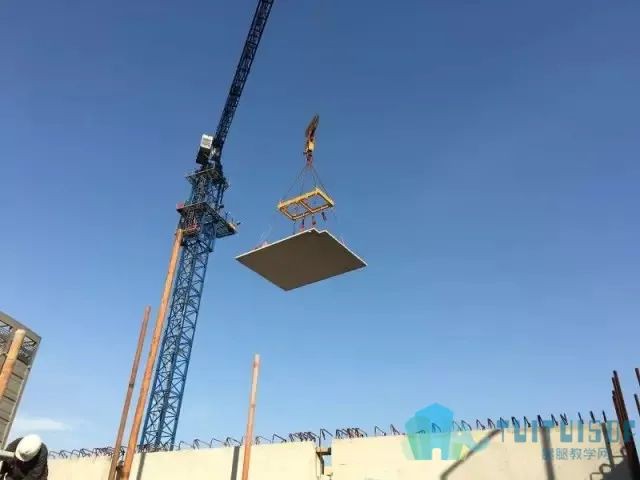"Building houses like building cars" is becoming a reality. Prefabricated buildings are becoming more and more common, and the day when we live in houses built in factories is not far away. Prefabricated buildings are assembled on site using prefabricated parts and components. my country has been actively exploring the development of prefabricated buildings. At present, the proportion and scale of prefabricated buildings are still low. In recent years, with the advancement of science and technology and the strengthening of promotion efforts, the development of prefabricated buildings has become more and more rapid, and houses built in a prefabricated way are getting closer and closer to us.
When talking about the advantages of prefabricated buildings, experts often compare buildings to cars. Cars are made up of thousands of parts from production lines, assembled through scientific design and precise welding. Building houses can also adopt this industrialized production method: the building parts are produced in the factory and then transported to the construction site, and the parts are assembled like building blocks. Vigorously develop prefabricated buildings, so that houses can be standardized in design, factory-produced, assembled, and decorated in an integrated manner.
This is not only conducive to the renovation of old houses, convenient for maintenance and replacement of parts, but also conducive to reducing environmental pollution caused by traditional construction methods such as construction waste and construction dust, and improving labor productivity and quality safety levels. Industrialization, digitalization and greening are the only way for the transformation and upgrading of the construction industry, and prefabricated buildings can become an important starting point for the development of the construction industry.

Prefabricated buildings are not only of great significance to the development of the construction industry, but residents can also experience the many advantages it brings. Prefabricated buildings can be more beautiful. Through different combinations of components, the building facades can be diversified, and prefabricated components are more conducive to the refinement of construction, making the building more refined. Prefabricated buildings are easier to maintain, and the quality of factory-produced parts is more stable. Prefabricated building decoration is more convenient, and the rework rate on site is greatly reduced compared to traditional decoration. Prefabricated decoration products are easy to replace, and pipelines are separated from building structures. Pipelines can be repaired by removing wall panels. Residents can also use digital panoramic instructions to better understand hidden projects, electromechanical pipelines, etc., and facilitate accurate maintenance. Prefabricated buildings are easier to update. They can achieve "growth" of apartment types, which is convenient for residents to freely separate according to changes in personal habits and needs, and the decoration surface materials can also be replaced as needed.

Nowadays, the popularity of prefabricated buildings has been increasing. As early as 2016, my country proposed to strive to make the proportion of prefabricated buildings in the newly built construction area reach 30% in about 10 years. According to the prefabricated building development plans proposed by many provinces, the proportion of prefabricated buildings in newly built buildings will soon reach or exceed 50%, and prefabricated buildings in some provinces have developed very rapidly. In the first half of 2023, the proportion of prefabricated construction area in newly built construction area in some provinces has exceeded 70%. As of the end of October 2023, the cumulative area of newly built prefabricated buildings in some provinces exceeded 100 million square meters, and the proportion of newly built prefabricated buildings in newly built buildings was 47.44%. They proposed that by 2025, the proportion of prefabricated buildings in newly built construction area will reach 55%.

Prefabricated building technology is developing rapidly. In this field, "dark factories" have begun to appear. The entire process of producing building components in the factory can be completed by robots. The development of prefabricated buildings must further fully integrate new technologies such as big data, cloud computing, the Internet of Things, artificial intelligence, and blockchain to develop to a higher level.

The promotion of prefabricated buildings requires cost. Prefabricated buildings have obvious advantages, but their promotion has always been constrained by high costs. The larger the scale of factory production of building parts and components, the more conducive it is to reducing costs. It is gratifying that with the increase in promotion efforts, coupled with the support of relevant policies and subsidies, the cost of some prefabricated buildings has gradually approached or even lower than traditional construction methods. It is precisely based on the reduction of costs that, in some rural housing construction projects, prefabrication has become a construction method that villagers are willing to actively choose. At the same time, companies are also actively exploring the construction of mobile factories for prefabricated buildings, transporting prefabricated factories directly to the vicinity of the project, eliminating the financial expenditure of repeated factory construction, and the increase in the frequency of production line use also helps to reduce costs.







